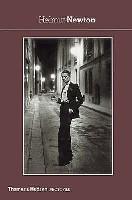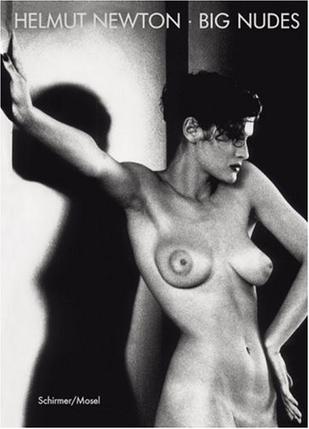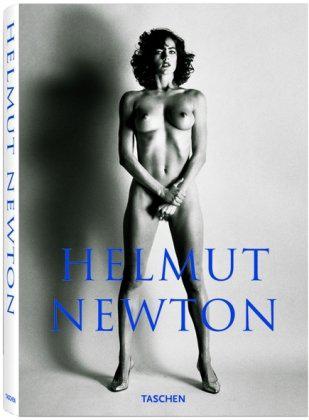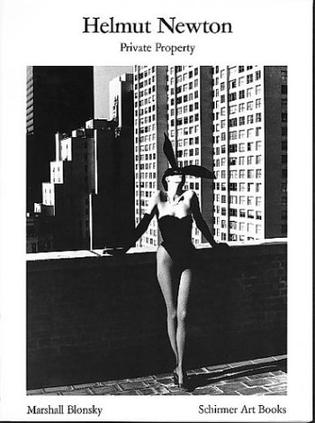-

Helmut Newton
Book Description Helmut Newton (1920-2004) was born in Berlin. He lived and worked all over the world and was one of the most internationally famous and controversial photographers of his time. His shots of haute couture and the beau monde are instantly recognizable, having appeared in virtually every major magazine in Europe and the United States. From his early work for Vogue to his portraits of the rich and famous, Newton conveyed a unique vision of a wealthy and glamorous world that often shocks but never ceases to fascinate. 64 duotone illustrations. About the series: The classic Photofile series brings together the best work of the world's greatest photographers in an attractive format and at a reasonable price. Handsome and collectible, the books are produced to the highest standards. Each volume contains some sixty full-page reproductions printed in superb duotone, together with a critical introduction and a full bibliography. Now back in print, the series was awarded the first annual prize for distinguished photographic books by the International Center of Photography. Book Dimension length: (cm)19.1 width:(cm)12.5 -

Helmut Newton
-

Helmut Newton: Sumo
The biggest, most lavish book production of the 20th century is back! "Sumo" was a titanic book in every respect: a 480-page tribute to the 20th century's most influential, intriguing and controversial photographer, it broke records for weight, dimensions, and resale price. Helmut Newton (1920-2004) always demonstrated a healthy disdain for easy or predictable solutions. "Sumo" - a bold and unprecedented publishing venture - was an irresistible project. The idea of a spectacular compendium of images, a book with the dimensions of a private exhibition, reproduced to exceptional page size and to state-of-the-art origination and printing standards, emerged from an open, exploratory dialogue between photographer and publisher. With the physically commanding "Sumo" weighing in - boxed and shrink-wrapped - at 35.4 kilos, Newton created a landmark book that stood head and shoulders above anything previously attempted, either in terms of conceptual extravagance or technical specifications. Published in an edition of 10,000 signed and numbered copies, "Sumo" sold out soon after publication and quickly multiplied its value. This worldwide publishing sensation now features in numerous important collections around the world, including New York's Museum of Modern Art. Legendary "Sumo" copy number one, autographed by over 100 of the book's featured celebrities, also broke the record for the most expensive book published in the 20th century, selling at auction in Berlin on April 6, 2000 for 620,000 German Marks - approximately $430,000. "Sumo" established new standards for the art monograph genre, and secured a prominent place in photo-book history. This new edition is the fulfillment of an ambition conceived some years ago by Helmut Newton. He would surely be pleased that, a decade on from its first publication, "Sumo" - now in a format that allows for a more democratic distribution - will reach the widest possible audience. However, proud owners of the new edition won't wrestle with their copy of "Sumo". -

Helmut Newton
Through their inimitable mixture of eroticism, subdued elegance and decadent luxury, Newton's pictures reflect in the highest aesthetic quality an obsession with human vanity - from female exhibitionism to male voyeurism. With technical perfection, an extremely detailed style and a relentless directness, Newton staged the neverending psychodrama that contrasts glamour with the need for admiration, self-confidence with the desire for self-presentation, and Eros with Thanatos. Private Property was originally a three-part portfolio containing 45 b&w photographs. It includes Newton's best work from the period 1972-1983 - an exquisite assortment of fashion shots, portraits and erotic motifs which are all based on real location and luxurious lifestyles. The entire sequence of pictures from the Private Property portfolio is included in our book which first appeared in 1989. -

Helmut Newton
What a sketch is for the painter is a Polaroid for the photographer, namely the first formulation of a concept, the raw material of the imagination, as it were. When Helmut Newton published a selection of his Polaroids in Pola Woman in 1992, the subculture called it a stroke of genius. It was the first time that the master let people look directly over his shoulder. We became witnesses to the magic and often intense process by which erotic fantasies become finished images; the preliminary stages of a perfectly styled Newton photograph. It is remarkable, if not astonishing, that even this "raw material" possesses very original qualities and a charm of its own.